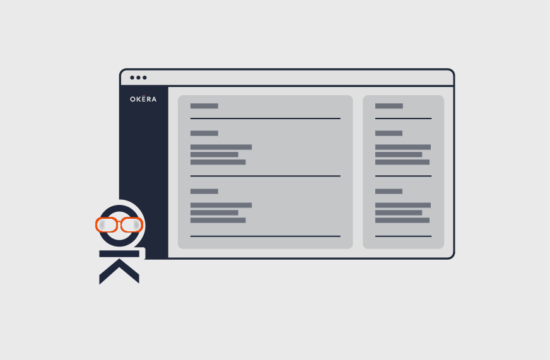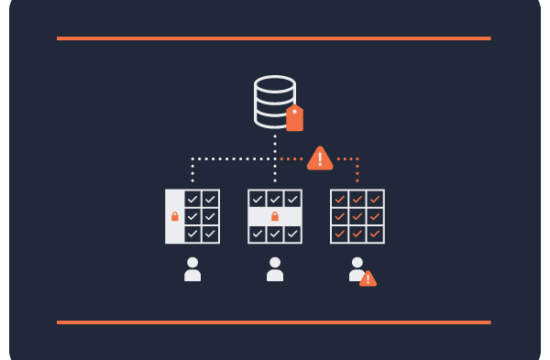A Look at How Credit Suisse Built a Culture for Future Data Success
“Most of you have heard the phrase, ‘Data is the new oil.’ But as we know with oil, it’s not valuable unless it’s refined and curated properly. So how do you think about refining your data, so it is a true asset?” So began Sarah Gadd’s recent session at the Airside Live virtual conference, which centered around building a framework for future data success.
Data is a critical asset for Gadd, who works as Head Of Semantic Tech, AI & Machine Intelligence at Credit Suisse, a global wealth management firm. With a complex and heavily regulated data landscape (dozens of regulations across 32 countries), it’s critical the firm keeps up with and meets regulations to keep data secure.
But for Credit Suisse, data success goes well beyond data security. Gadd shared the data strategy and data management framework developed by the Chief Data Officer (CDO) and their team and their journey to get data running across their organization like a well-oiled machine.
A Data Culture is the Foundation for Success
The CDO group at Credit Suisse was established in 2017 and rapidly went to work building the foundation for the organization’s future data success. While an important part of that would be the enterprise data governance tool rolled out that same year and the data management framework, the true foundation of data initiatives is the culture a company builds around them.
Gadd said, “You can have the best data in the world, the best governed data, fantastic systems, but unless the people really buy into it and understand how important data is, and know to go to the right strategic assets and [how] to use the enterprise systems, it’s not of value.”
A data culture:
- Manages data as an asset – People using data can easily understand its location, how to access data, if it’s fit for purpose, quality, risk if data is wrong, and who to contact if there’s a problem.
- Protects and uses data ethically – Protection of data is ingrained in day-to-day operations; embed data ethics into the core values of the org.
- Drives decision-making with data – Consistent, repeatable approach to data-driven decision making; use of internal and external data to predict future behaviors and guide next-best actions; drive innovation in the form of new products, services, and business models
Depending on where you work (even if it’s much smaller than a 50,000 person enterprise company), it’s likely your company does just some of these things consistently. Despite all the talk of digital transformation and data journeys over the past decade, unless your organization started with a strategic data mindset and the necessary tools, developing a data-driven culture is no small feat!
Part 1: Structure the Data Management Framework
Credit Suisse’s data management journey began with the formation of the CDO group, the rollout of an enterprise data governance tool, and the development of this framework to govern data assets across the organization. The team organized its framework around five pillars:
- Security: Prevent unauthorized access, modification, destruction, and disclosure of data through various mechanisms such as access control, obfuscation, or anonymization.
- Quality and Control: Measure and maintain the quality of data to support business processes and objectives with controls that facilitate issue identification and resolution and ensure data quality.
- Governance: Develop data policies outlining the ownership, stewardship, and operational structure to manage data as a critical asset, with risk managed.
- Architecture: Design and implement optimal data architecture to ensure data is accessible in the appropriate systems and that your teams can use it.
- Usage and Analytics: Enable the business value of data through business intelligence insights that lead to cost efficiencies, risk reduction, and revenue generation.
With the framework established, it was time to meet the framework’s objectives for data.
Part 2: Deliver on the Framework
When Credit Suisse started its data journey, there were pockets of data scattered everywhere. The many business units and corporate functions around the globe each owned their own data silos, across various data sources and platforms, from Oracle to Cloud to HDFS and Hadoop. The data team needed to get a view across them all for their key data assets and strategic data assets to:
- Improve data quality – Measure, track, and report the quality of key data assets, both internally and to regulators.
- Simplify data sourcing – Simplify the data consumer’s journey to identify, locate, and access high-quality, strategic data through a catalog-driven standard data access framework
- Industrialize data lifecycle management – Manage, govern, and deliver your data at scale with a consistent operating model, standard tooling, and clear roles, responsibilities, and accountability.
Part 3: Create the Data Culture
The biggest take-away from Gadd’s presentation is this: data culture is the foundation of Credit Suisse’s data strategy. People need to feel confident that the enterprise data is high-quality and can be trusted.
It’s very common to have low quality data, which cannot be trusted for decision making. And because of that, people try to build their own datasets (because they think they can do better!) and things just get worse and worse as inefficiencies and inconsistencies spread. Organizations with clean, trusted data are superstars.
Gadd shared that building a data-driven culture required leadership from the top stakeholders in the data office and information management teams. It also required a lot of hard work over many years to build up systems and accountability so data could be trusted, and if there was a doubt or question, those would be addressed.
The CDO group and the CIO’s office worked together to champion analytics initiatives and the proper use of data. As Gadd presented in her slides, their vibrant data culture is something they nurtured over many years. It didn’t happen because the executive board said so, but it could not have happened if the executive board hadn’t funded the effort.
To demonstrate all that effort was worth the fuss, the team made sure to put governance in place around which data and analytics project to focus on to align with initiatives that are important to the business. By ensuring alignment with the strategic impact for each business division or corporate function, users felt encouraged to continue going back for more.
Transparency was essential to get the whole company on board, so the team created a global Analytics Community Forum open to all levels and functions across the firm. “Everybody now enters their use cases, from ideation all the way through to production, so that people can search through that metadata if they’re starting on a new journey. If…I’ve got an idea, I can go see if somebody has already done that, maybe leverage it. Or…what lessons did they learn? So building up that trust across the community and that grassroots approach… is super important,” Gadd explained.
A huge part of building an enterprise-wide data-driven culture is empowering people through education. Credit Suisse developed four new journeys for their on-line learning tool that assists everyone from Excel jockeys to AI leaders so people can educate themselves and upskill and learn how to use new techniques.
The right tooling, Gadd says, is interesting. The team doesn’t want to introduce redundant tools (and, we can presume, pay multiple vendors) for roughly equivalent functionality. And yet they don’t want to stifle innovation. As new vendors introduce themselves, Credit Suisse looks across the enterprise to see what they currently have that might be comparable, and has a system for evaluating whether a new tool will help the business.
Wrapping the first half of her presentation, Gadd says that their Data Access Framework “has proven key to giving people access to the data they need, and to spin up sandboxes securely around data so people can get on with the actual use case they have and ask the questions they’re trying to solve for, versus spending months trying to locate the right data.”
Watch the Session for More Insight
Gadd packed her session with more valuable information:
- Enabled easy self-service access to quality data with an enterprise data catalog
- Built the data foundations for scalable AI and handles the ethics of AI
- Measures data culture success (hint: metrics are tough, but they’ve figured it out!)
To learn how Okera helps companies gain full visibility into how sensitive data is used, and how to standardize and simplify fine-grained access control across the enterprise, visit our product section.



